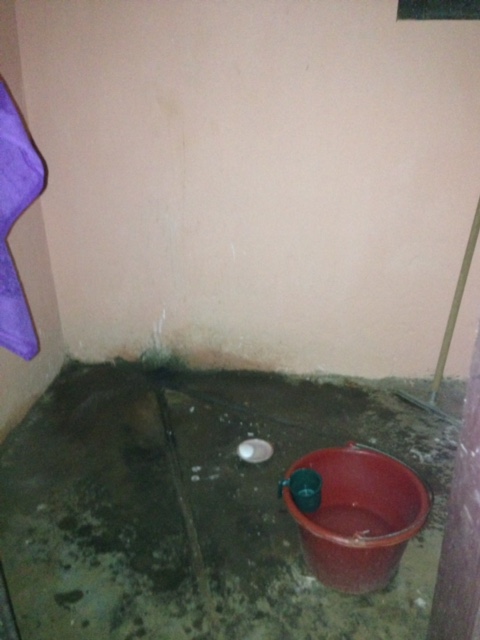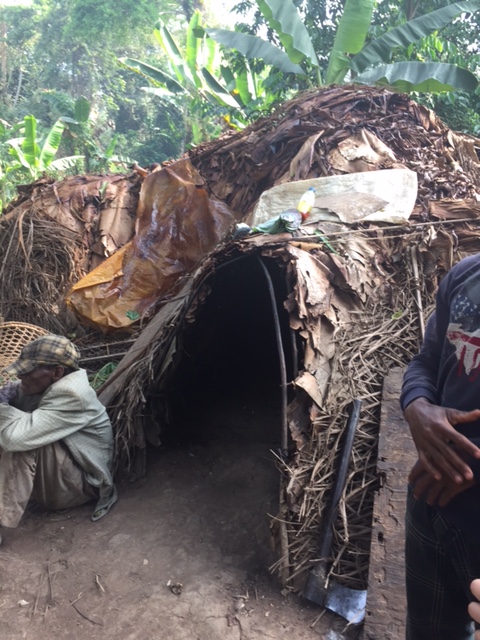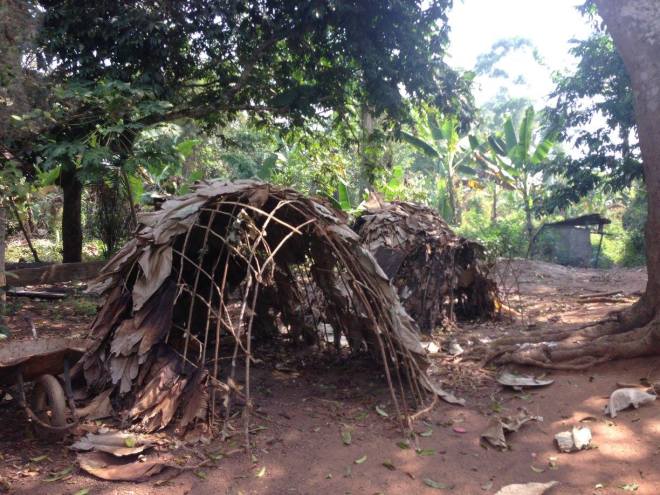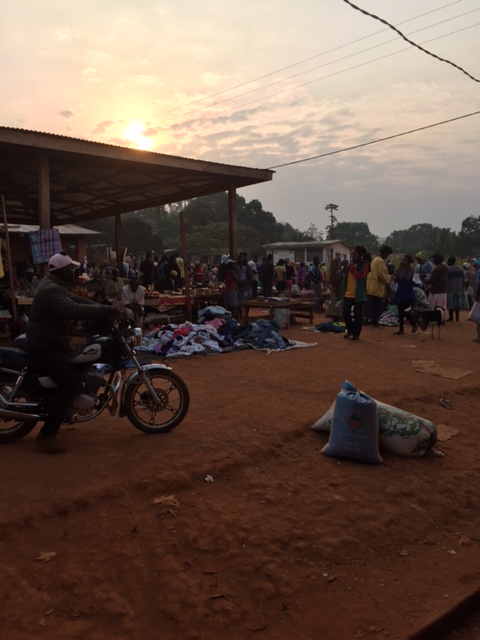We spent two days and three nights in Dimako, a town situated in Cameroon’s East Province approximately 200km from the Central African Republic (CAR). Dimako is an anachronistic puzzle. A place where people have cell phones (flip ones mostly) but no running water. A place where the heat tops out above 90°F (32°C) but young men wear winter jackets and ski caps – they believe Malaria is spread by the wind. It is a place not immune to the long arm of global capitalism; where the forests are plundered for wood but poverty remains endemic. It is a place where alcoholism is pervasive, electricity sporadic, and where schoolchildren gush over a passing jetliner but have little hope of ever boarding one.
Our time in Dimako was limited to just two full days. To make the most of our visit, we tried to see and do as much as possible. This included a visit with the indigenous Pygmies (the Baka People), a walking tour of the town, and visits with a family of American missionaries who have made Dimako their home. I’ve described a few of the highlights below.
Accommodations
Michelle is the latest (and possibly last) in a long line of Peace Corps volunteers who have set up temporary residence in Dimako. Like her predecessors, Michelle lives in a concrete ranch-style house, a short walk from the center of town.

Several smaller houses are located on the same lot of land.

The house is actually reasonably large, with two bedrooms, a kitchen and a large living room. There is also a “shower” room adjoining the master bedroom.

The bathroom, or outhouse, is located around back.

In case you’re curious, here is a picture of the inside.

Cockroaches swarmed the outhouse at night, but it was reasonably clean during the day.
Transportation
The primary means of affordable transportation (aside from walking) is riding on the back of motorbike taxis. As soon as we left Michelle’s house in the morning (we were on foot walking along the road) moto drivers zoomed by speaking rapid fire French and offering us rides.

We rode on these motorcycles just once, when we went to see the indigenous Baka people.
The Baka people
One of the highlights of our time in Dimako was visiting with the semi-nomadic Baka people. These friendly, but largely marginalized people live in the southeastern rain forests of Cameroon.
The motorbike ride into the jungle was terrifying and exhilarating. We had been told the French word for slow down, but our driver (Amy and I sat together on one bike) either ignored us or simply didn’t care. We drove fast; first on the highway, hugging the shoulder so trucks could fly by, and then, turning off the main road, we flew down dirt roads and around blind curves, leaving a trail of dust in our wake.
The Baka family that we met lives in a small clearing that is also home, surprisingly, to a family of American missionaries. These missionaries have been living in the African jungle for years and years. They were just loading up a van with their kids for an annual New Year’s retreat in Western Cameroon when we arrived. Unfortunately, we were not able to talk with them for long. I would have liked to have heard more about their fascinating lives.

The Baka people speak their own language, so communicating with them can be difficult for many outsiders (although the American missionaries have learned the local Baka dialect). Fortunately, one of the Baka men we met with spoke French and was happy to talk with us (through Michelle).
The Baka people live in temporary huts made largely of leaves and sticks. The man we spoke with said his whole family lives in one hut that is reconstructed every three months or so.

We were given a tour of the inside of the largest hut, where the remains of a fire were burning in the hut’s center. With three people looking around inside, I found the hut to be a bit claustrophobic, but we were told that eight people usually sleep there at night.

Outside, a family was cooking over an open fire. The food did not look especially appetizing. They were cooking field mice that the family had caught using outdoor traps.


As we were preparing to leave, we saw this child coming back from the fields. He was dragging a large machete as he walked.

The Market
The open air Dimako market is a short walk from Michelle’s house. The best time to go is early in the morning, so we set out before the sun was fully up.

The market sells a variety of vegetables, meats (both fresh and not so fresh), fishes and spices. In addition, there were piles of clothing, shoes, machetes and African print dresses for sale (just to list a few of the things we saw).
The local butcher slaughters a cow every three days. We happened to visit the market on the third day and the remaining meat, such that it was, looked, without the benefits of refrigeration, like it was probably unfit to eat.



The Missionaries
Michelle is not the only American living in the small town of Dimako. A friendly American missionary couple lives down the road with their four adopted children and a temporary home school teacher. They welcomed us into their home and we enjoyed talking about their work and their lives in Cameroon. Their work – to translate the bible into a language that has no alphabet or other written form – sounds both fascinating and exhausting. You can read more about them here:
http://haretranslation.blogspot.sg/
Other thoughts / sights
During our walking tour we visited the remnants of an old, colonial-era logging plant. Along the same tree-lined road we came across a half-dozen abandoned French houses.

I would imagine there’s a lot of history behind these houses, not all of it good.
We also visited the local hospital which has intermittent electricity and no running water. Later we went for a chicken dinner that we prepared, with the help of a gracious local family, from farm to plate.
Stay tuned for Part 4 of our trip to Cameroon.
